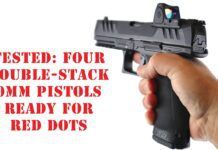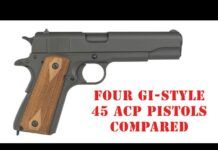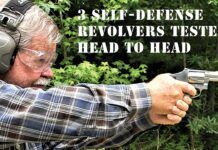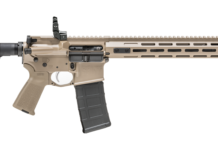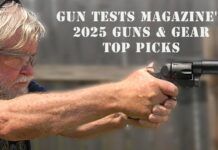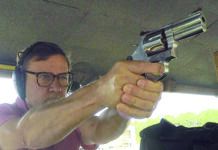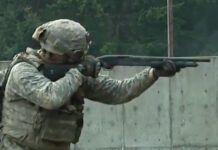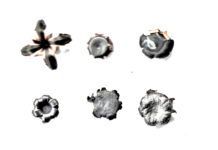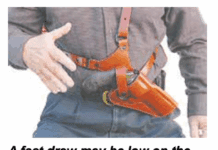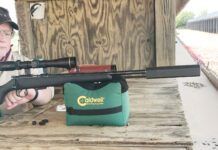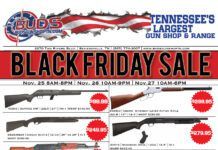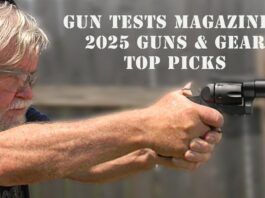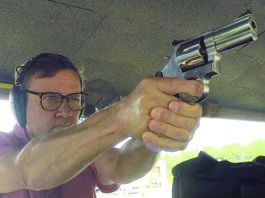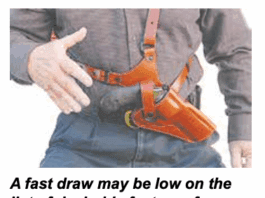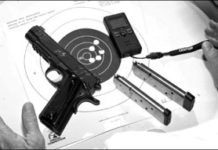MTM Announces Mini Digital Reloading Scale
Browning Expands Gun Accessory Line for 2008
The Original Winchester Name is Back
SHOT Show Media Day Rock-and-Roll Shooting Party
.45 ACP Matchup: Were Mostly Sold on Kimbers Custom SIS RL
In this evaluation, we will look at three .45 ACP 1911-style pistols. Not too long ago, this would mean three pistols that looked almost exactly alike. But today's 1911 may contain as many different components as the total number of its parts. For example, the new Brownells catalog devoted solely to the 1911 lists as many as 27 different styles of custom hammers. Thus, our test guns offered several different variations on the 1911 platform.
Our three test guns were the $1421 Kimber Custom SIS RL, Springfield Armory's $1332 Loaded Operator MC, and the $1129 Para Ordnance P14-45S GR. Each gun fired from a 5-inch barrel supported at the muzzle by a bushing and could be referred to as full-size "Government" models. But the Para Ordnance pistol offered higher capacity, feeding from a wider magazine wherein the rounds were piled in a zigzag pattern rather than stacked in a single column. All three guns varied in the designs of their grips, sights, and thumb safeties.
New #960 Ed Brown Firearm Lubricant
NSSF Shooting Sports Summit
USPSA Shoots For 20,000 Members In 2008
Full-Size Polymer .45s: S&Ws M&P45 Beats H&K and Glock
Gun Tests readers sometimes ask why reviews on certain guns vary over time. For instance, they wonder why Gun A, reviewed two years ago, got a "Don't Buy" rating, but in a more recent evaluation, it gets a B+. The short answer is that test to test, guns vary, ammunition varies, the story angle varies, and, perhaps most important, the match-ups vary. In an earlier draw, Gun A may have run up against other models that made it look like chopped liver. Then when we tested it again, Gun A may have whipped Guns B and C because the latter two weren't much good, and Gun A benefited from the comparison.
In a way, that's what happened when we tested a new-for-2007 Smith & Wesson M&P 45 .45 ACP, $619, against a $1235 Heckler & Koch USP Compact Tactical USP45CT .45 ACP, which we last tested in June 2007, and the $635 Glock 21 SF, which we tested in July 2007. In June, the H&K got an "A" rating, when we said its "…light weight, ease of maintenance, and accuracy makes it very appealing. Our staff concluded that it was best to operate the USP45CT either as a full-time single-action pistol or a full-time TDA. Sticking with one system or the other was the only way to stay trained up, in our opinion."
Likewise, the Glock 21 SF got kudos from us as well, when we said in July, "No question this is an improvement on the G21. Better handling, but still a big gun with little potential for concealed carry. In our view, we think police will be trading in their G21s for the improved SF model."
First introduced by S&W in February 2007, the M&P45 is the newest addition to the M&P pistol series, a product line launched in December 2005. We've tested the M&P9 9mm and the M&P40 with varying degrees of success, rating the Smith & Wesson M&P 9mm Compact 2009004, $624, as a "D" in the April 2007 issue. The Smith & Wesson M&P .40 S&W No. 209000, $624, got a "Conditional Buy" in the August 2006 issue, and a Smith & Wesson M&P40 .40 S&W, $495, got an "A-" in the October 2007 issue.
The M&P45 began shipping in May 2007. Leland Nichols, president and COO of Smith & Wesson Corp., said at the time, "By combining the powerful .45 ACP cartridge with the performance and safety features of the M&P series, working professionals and shooting sports enthusiasts have a new option in the growing line of M&P products well-suited to fulfill a variety of needs."
Nichols continued, "We are also aware that multiple branches of the U.S. Military have expressed a desire to shift from their current 9mm weapons to either a .40 or .45 caliber duty weapon for greater stopping power. We are now currently shipping both .40 and .45 calibers, as well as a 9mm, in the M&P Pistol Series, and are fully prepared to address either requirement, should the U.S. Military initiate a request for purchase."
The gun was rolled out as a full-size polymer pistol with a 10+1 magazine capacity and an optional 14+1 magazine. It was originally offered with a traditional black frame and was manufactured with or without a frame-mounted ambidextrous thumb safety. Later, the M&P45 came with a dark earth-brown frame and a standard manual thumb safety, which is the gun we acquired for this test.


